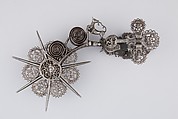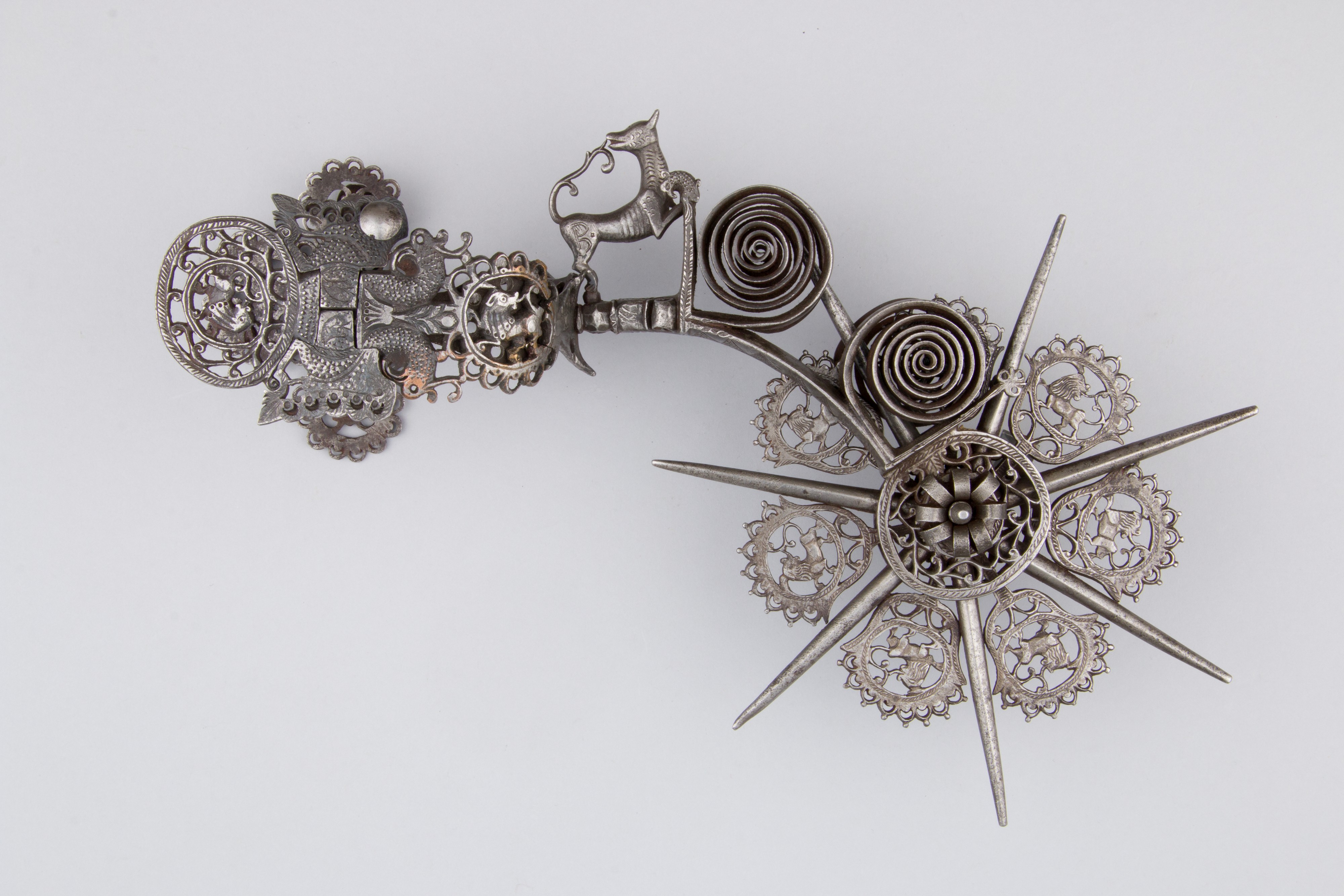Pair of Rowel Spurs
Inscribed by Manuel Casco Mexican
Not on view
These incredible spurs are adorned on the heel band and between the spikes of the rowel with delicate pierced decoration featuring lions walking among vegetal scrolls. Each terminal, featuring buttons for the straps, is shaped as a double-headed eagle, originally the German imperial emblem, a motif imported from Spain and used here only for a decorative purpose. Each neck is adorned with spirals and a figure of a dog (or a stylized lion) in the round, standing on a plaque bearing the signature of the maker, Manuel Casco, and the date. Other letters and monograms are inscribed on the dogs, possibly the marks of two of Casco’s collaborators.
While the pierced decoration was influenced by the importation, via Spain, of horse equipment made in Southern Germany in the 16th and 17th century, as well as by Chinese textiles, 18th-century Mexican spurs like these examples, in addition to bits and stirrups, often feature native designs and animals, such as birds and monkeys.
Only a few very skilled spur makers, mostly working in Mexico City, were able to create such metalwork. Some parts, like the neck (except the dog figure), are made out of a single iron sheet, sliced and curled to create the iron scrolls and the pierced plaques holding the rowel. The pieces were usually heated several times during their manufacture, giving the metal a shiny appearance meant to imitate silver. Impressive, but highly impractical, these spurs would have been used during ceremonies and festivals as a mark of status, thereby revealing the importance of horses in traditional Mexican society.
Due to rights restrictions, this image cannot be enlarged, viewed at full screen, or downloaded.
This artwork is meant to be viewed from right to left. Scroll left to view more.



